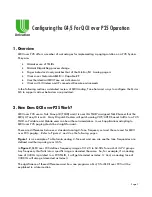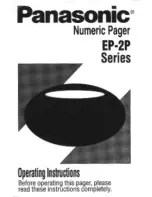
Page 5
d.
If there is no existing 2-Tone coding plan this allows one the opportunity to create one that may be
more efficient and straightforward than a legacy plan that has evolved over time. To begin creating
a plan;
v.
List all the entities that need to be paged.
vi.
Once this is identified one may want to assign a common Tone B to specific entity for ease of
determining different whose ID it is.
vii.
If there are different entities that would be paged out for an incident one may want to assign
that combination of entities to one ID (instead of “stacking” 2
-Tone IDs which adds to the time
to dispatch).
viii.
A suggestion is one use the standard Motorola 2-Tone Groups to create the above IDs
keeping in mind the “one to one” relationship described in paragraph 3.c.
e.
Once the above steps are completed and reviewed with the System Administrator and Director of the
Dispatching Center the process of programming the pager can begin.
4.
Programming the G4/5
A.
Assigning the TGID(s) and the QCII over P25 Codes
With the G4/5 Programming Software select Tab D.4 to assign the TGID(s) and the QCII over P25
Codes. Refer to Figure 4 below, where an example is provided. Refer to the bottom three rows
where the P25 Sub-Group ID are set. In this example standard 2-Tone ID are set and from these it is
easy to select the corresponding QCII over P25 Index in the P25 Sub-Group ID column.
Figure 4:
Summary of Contents for G4
Page 2: ...Page 2 Figure 1...
Page 3: ...Page 3 Figure 2...
Page 7: ...Page 7 Figure 7 Figure 8...
Page 12: ...Page 12 Figure 1A Figure 2A...
Page 13: ...Page 13 Figure 3A Figure 4A...




















